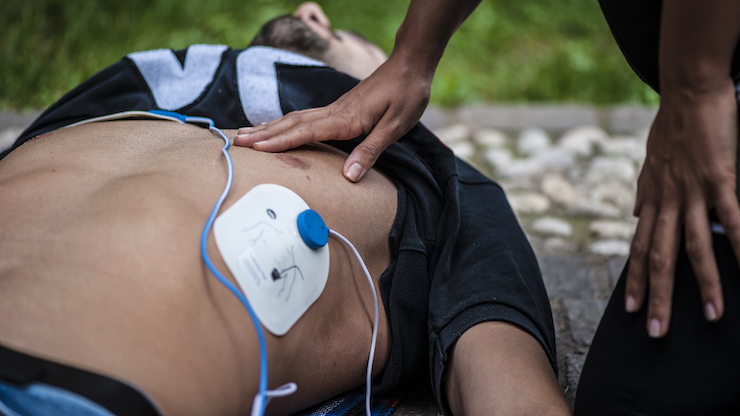
I’m sure you’ve all seen a TV show or movie when doctors and nurses rub together shiny metal paddles together, yell our ‘clear’ and then shock the patient back to life. That thing is called a defibrillator which is pronounced de-fib-rill-ate-or and is used on people who have had a cardiac arrest to reset their heart rhythm back to normal.
Who needs a defibrillator?
A defibrillator is used on a person who has had a cardiac arrest and is unconscious. A cardiac arrest is where someone’s heart has stopped. When your heart stops, it can go into funny rhythms and a defibrillator can reset these rhythms back to normal. There are two types of rhythms that they can reset called ventricular fibrillation and ventricular tachycardia where the ventricles, the main two pumping chambers of the heart, shake or contract too rapidly so no blood is being pumped forward. By passing a shock through the heart, you can hopefully reset this back to a normal rhythm.
How does it work?
It’s kind of like turning the heart on and off again! The defibrillator passes electricity through the chest and through the heart and resets all of the heart cells electricity back to baseline again. After that, the normal and regular rhythm of the heart can kick back in. This means the heart contracts rhythmically and normally and is able to pump blood around the heart.
Is it like TV?
No! Everyone on TV seems to get a shock and wake up immediately. In real life, it’s not quite like that. Firstly, those big shiny paddles aren’t around anymore. Now we use big sticky pads the size of your hand that go on to the chest which gives a better shock and stops people being accidentally shocked with paddles waving around. The other thing TV shows badly is that everyone gets a shock and wakes up. In reality, not everyone whose heart stops can be shocked – only those with the two specific heart rhythm problems above. In people whose heart stops in the community, the survival rate is only around 10%. But there are ways of improving that.
Who can use a defibrillator?
When someone suffers a cardiac arrest, time is everything and early CPR by people around that person has been shown to save lives. Likewise, with defibrillation – the sooner we can reset the heart, the better that person’s survival. What we like people to do is to learn CPR, which is very easy to do and can definitely save lives. The earlier we defibrillate someone, the better their chances of survival.
In recent times, we’ve seen automatic defibrillators start to appear in lots of public places. These are called automatic external defibrillators or AED’s and are marked with signs when they’re present. You don’t need to be a doctor or a nurse to use this. These machines analyses the patient’s heart and will literally tell you what to do each step of the way. These machines are now available in gyms, shopping centers, sports stadiums and a whole host of other places.
Next time you’re out and about, keep an eye out for the AED and even better yet, take a first aid course and learn how to do CPR and use and AED.